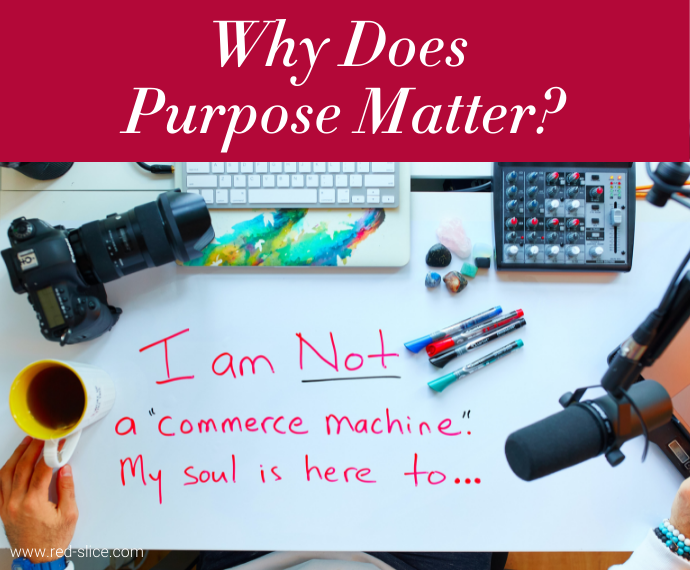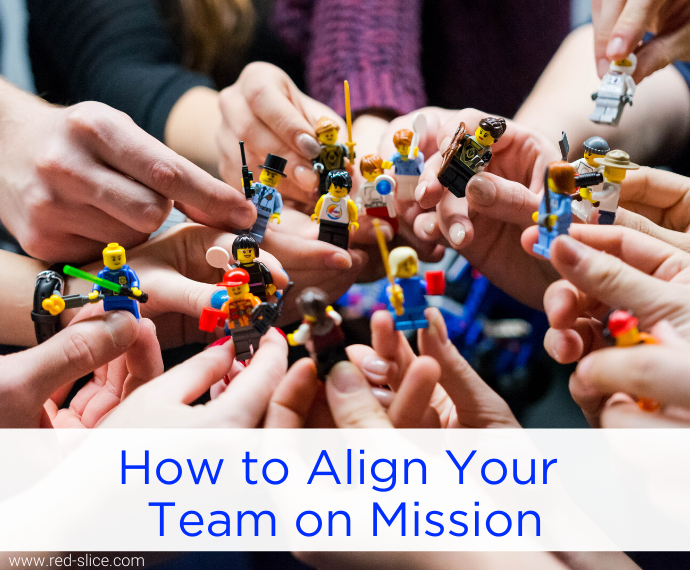It’s funny how entrepreneurs and employees alike get caught up in the tactical details of their business on a daily basis, but when faced with the ultimate question – why do you do what you do – they seem to freeze up. My theory is that a lot of the meaning behind the company mission is so “feelings-based” that we often find it hard to articulate it in the right words.
I help clients copywrite their mission and vision statements only after we think though the Brand Strategy. Why? The mission and vision become much more clear as you move through the branding process. As you think about your company’s reason for being, your goals, the image you want to project, and the people you serve, you begin expanding your definition of what you want your company to be. I find just talking to a business owner and asking, “Why did you start this business?” can yield the seeds of a mission or vision statement. They use certain words or phrases over and over again. As you think through the Brand Strategy, certain themes that consistently emerge will be strong clues to your mission and vision.
The mission and vision not only help you keep the end in mind at all times, they will also inspire your customers –and your employees. Yes, we know your primary goal is to make money, but customers and employees want to connect with your business on a deeper level. They want to know their buying choices and work efforts are relevant to a higher goal. This motivates people and helps them form loyal connections.
So what is a Mission statement?
Your mission statement is a precise definition of what your organization does on a daily basis and what you want to accomplish. It should describe the business you’re in and provide a definition of why the organization exists. Try and keep this to one or two sentences in length. Some example mission statements:
- “Make flying good again” (Virgin America)
- “Our mission: to inspire and nurture the human spirit – one person, one cup and one neighborhood at a time.” (Starbucks)
- “The mission of Southwest Airlines is dedication to the highest quality of Customer Service delivered with a sense of warmth, friendliness, individual pride, and Company Spirit.” (Southwest Airlines)
- “To provide effective means for the prevention of cruelty to animals throughout the United States” (ASPCA)
- “Women for Women International provides women survivors of war, civil strife and other conflicts with the tools and resources to move from crisis and poverty to stability and self-sufficiency, thereby promoting viable civil societies. We’re changing the world one woman at a time” (Women for Women International)
Small businesses can create a mission statement so inspiring they may not require a vision statement. But if you have a loftier goal in mind for the future of your company, then a vision statement is a great way to frame that.
Articulating the Vision
Rebecca Rodskog of Future Leader Now helps organizations create cultures where people can thrive and do their best work. As an experienced change management consultant and personal development professional, Rebecca is often tasked with crafting vision and mission statements for complex projects, so companies don’t lose sight of the end goal. She also creates mission and vision statements for individuals. Rebecca advises clients who are creating a vision statement to ask themselves: “What is your ideal preferred future?” and be sure to:
– Draw on the beliefs, mission, and environment of the organization.
– Describe what you want to see in the future.
– Be positive and inspiring.
– Don’t assume the system will have the same framework as it does today.
– Be open to dramatic modifications to current organization, methodology, teaching techniques, facilities, etc.
Ask yourself:
- Where will my company be in the long term? Will it be the premier provider of a particular product or service? Will it be in the top ten international players in a particular market?
- What is the ultimate “to-be” state for my company?
You may not require an actual vision “statement”, as long as you can paint a clear, compelling picture that drives the business forward. These could be ideals or lofty goals that rally the internal troops and help customers connect with you. Below you’ll find sample vision statements from several companies. You’ll note these contain ambitious visions that go beyond day-to-day operations and the specific market spaces in which these organizations play today. They paint a picture of an ideal future if the business does well:
Women for Women International envisions a world where no one is abused, poor, illiterate, or marginalized; where members of communities have full and equal participation in the processes that ensure their health, well-being and economic independence; and where everyone has the freedom to define the scope of their life, their future, and strive to achieve their full potential. (Women for Women International)
I believe that this nation should commit itself to achieving the goal, before this decade is out, of landing a man on the Moon and returning him safely to the Earth. (President John F. Kennedy, 1961)
Coca Cola’s vision statement is actually a multi-part credo:
- People: Be a great place to work where people are inspired to be the best they can be.
- Portfolio: Bring to the world a portfolio of quality beverage brands that anticipate and satisfy people’s desires and needs.
- Partners: Nurture a winning network of customers and suppliers, together we create mutual, enduring value.
- Planet: Be a responsible citizen that makes a difference by helping build and support sustainable communities.
- Profit: Maximize long-term return to shareowners while being mindful of our overall responsibilities.
- Productivity: Be a highly effective, lean and fast-moving organization.
In summary, your mission is what drives you on a day-to-day basis. It’s the reason your product or service is in existence, and it defines the “why” behind the thing you’re creating. Your vision is the end state: what you ultimately want your company to become and the impact you want to have on your customers and the world.
Your mission and vision create the framework and inspiration your organization and its employees need to be successful. An old Japanese proverb eloquently states the important symbiotic relationship between vision and action: Vision without action is a daydream. Action without vision is a nightmare.
*This post was adapted from my book, Branding Basics for Small Business. Check out the juicy 2nd edition with new case studies, fresh advice on everything from content marketing to networking and expert insights from the likes of Alexandra Franzen, Mike Michalowicz, Ann Handley, Sarah Von Bargen and more!
Want step-by-step guidance to craft your mission and vision statement, as well as your entire brand and marketing plan? Then check out Momentum PRO, a self-guided and stress-free course that will guide you, step-by-step, through everything you need to promote your work and build your fan base with more ease, joy and impact.








